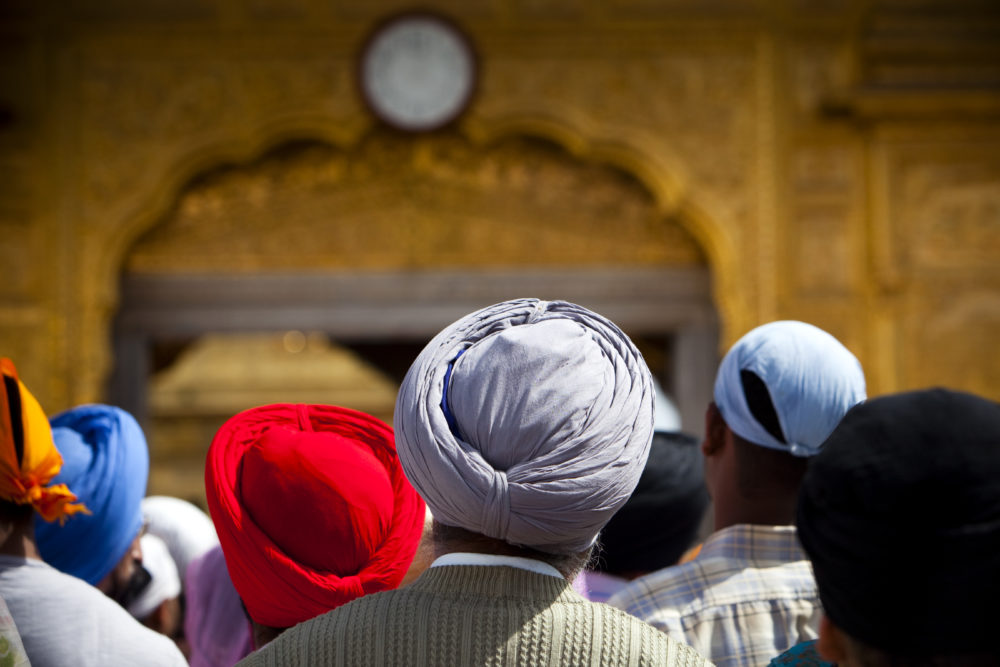A Symbol of Sikh Identity
A Symbol of Sikh Identity
Meenketan Jha | mj2930@columbia.edu

I stood there stranded, clueless as to where to go. On either side of me, a crowd of men and women rushed past to take their place. I was visiting a Sikh temple in Queens, a house of worship as a Gurudwara. Right in front of me was the Guru Granth Sahib, the central religious scripture in Sikhism. I peered around to pick the best location to sit. Hair uncovered I was sticking out like a blue bowl sitting in a cupboard full red dinnerware. Aside from my phone buzzing at maximum volume, the space was filled only with the subtle noise of the hymns of kirtan.
Men and women sat separately on either side of the room; even the young children were separated by gender. While the gender split is a common part of religions originating from the Asian subcontinent, a lot of such unsaid rules are rarely a part of modern-day practices. Although this isn’t an obligation, Sikhism is one of the few faiths where original gurus teach on equality between the sexes giving women equal rights in all spheres of the belief. One can view the segregation as a sign of balance between the two sexes – not one needing to be dependent on the other.
All those gathered at the Temple, on Broadway and 61st in Flushing, Queens, regardless of gender, had covered their hair. Men wore the Sikh turban and women used their shawls to cover their hair. The turban has always been an essential part of daily attire for a Sikh male. The head of the Gurudwara, Brahm Das ji, wore the look of horror as he scurried towards me.
“Cover your hair, son!” he said as he pulled me to the outside of the hall handing me over a handkerchief with a picture of the khanda, a symbol of Sikhism, adorned on it. “Have you never been to a Gurudwara before?”
Although I lived most of my life in India, I had never been to a Gurudwara before. In a Hindu temple, which I frequent, men do not have to cover their heads though the same rule doesn’t apply for women.
I scampered to cover my hair. Those who did not have a turban took handkerchiefs from around their heads, before giving me an odd look as I struggled with mine. Seeing my fruitless attempt, Amitoj Singh, a man in his early 30s came to help me.
“Your first-time son?” he asked. I nodded asking him why it was imperative that I cover my hair. “It’s maryada (modesty),” he replies. “An act of benevolence towards the Higher Being who dictates my life and makes miracle happen every day, I am bowing to the almighty in thanks and gratitude.”
One of the world’s newer religions, Sikhism derives its principles from faiths all over while adding a few uncompromising components like cleanliness. Unlike other religions, Sikhism’s core values call for cleanliness, respect, valor, perseverance, and equality. The turban houses and protects uncut hair, a sacred custom for those who follow the faith, the hair is tied up to the important spiritual center of your body – the Dasam Duar (7th Chakra). Crossing the pressure points on our temples, the turban helps an individual keep calm and reserved in times of turmoil and prayer.
“Nowhere in the Guru Granth Sahib does it say you have to wear a turban, but we do it. Why? Because the turban is a symbol of pride, valor, and distinction (naira), the last of the Sikh gurus is said to have his blessings on all those who stay naira,” says Brahm Das Ji in a conversation with me once the ceremony is over.
Brahm Das adds that because the turban makes Sikhs stand out, it also makes them accountable for their actions. The faith says that everybody is equal in God’s eyes and sex does not hinder your relationship with God. It also disregards, in theory at least, Hinduism’s rigid, structural caste system where people are subjected to a position on four-tier based social strata.

